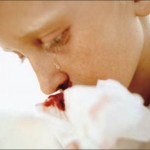How to Treat Frequent Nose Bleed in Children ?
 Nose bleeding in children generally occurs when they are between the ages of 2 years to 10 years. In case nose bleeding occurs in infants, it could be a cause of concern and needs investigation. In most of the cases nose bleeding is occasional and does not appear frequently, however in some cases it could occur regularly. Though a cause of anxiety both the parents and children but it is a minor problem which can be treated at home. More than 90% of cases are those in which it originates from anteriority, as such not a cause of concern.
Nose bleeding in children generally occurs when they are between the ages of 2 years to 10 years. In case nose bleeding occurs in infants, it could be a cause of concern and needs investigation. In most of the cases nose bleeding is occasional and does not appear frequently, however in some cases it could occur regularly. Though a cause of anxiety both the parents and children but it is a minor problem which can be treated at home. More than 90% of cases are those in which it originates from anteriority, as such not a cause of concern.
Causes
In most of the cases it is caused by nose trauma and often caused by picking of the nose. Other causes of nose bleed could be upper respiratory infection or allergic reaction of something or nasal sinus infection. Exposure to warm dry air is also a major cause of nose bleeding in many children and in some cases exposure to dry cold air could also cause bleeding. Other causes could be vigorous blowing of nose or an injury.
Nose bleeding usually occur in one nostril. In case of heavy bleeding, the blood could accumulate in the nose and start flowing from the other nostril, giving the impression that it is flowing from both sides. In case the child raises his head backwards it could drip in the throat and goes into the stomach and in case the child vomits or spits, it will appear as if the blood is in his saliva or is vomiting blood.
Generally, the blood loss is minor and not excessive. It can be associated with dizziness, the child may feel weak and confused for some time and in rare cases the child may also faint. This is generally due to trauma on seeing his own blood as this could give a frightening experience.
As mentioned above 90% of the cases are due to anterior nose bleed and the bleeding originates from blood vessels on the nasal septum where they converge. This is easy to control by measures performed at home.
The second type of nose bleed is called posterior nosebleed. This generally occurs in older people but can also occur in children. In this case bleeding originates from the back part of the nose. This type of bleeding is not that easy to control and may require hospitalization and expert treatment.
Treatment
Generally, first type of nose bleeding in children can be stopped at home. When nose starts bleeding, it is essential that both the child and parents should keep cool and make the child lie down in the lap with the head tilted slightly forward and press the soft part of the nose gently for some time. Give a clean wet tissue or soft cloth to the child to clean the nose while you handle him. In about 10 minutes the bleeding should stop and the child will be normal.
In case the child leans back the blood may flow down the throat giving a bad taste to the child who may vomit. Also there could be chances of choking. The child should not blow the nose after bleeding. As a part of general learning about health, the child should be taught that he should never insert any foreign body in his nose.
In case nose bleeding is very frequent, say more than once a week, and does not stop easily and the child feels dizziness and weakness, a visit to the doctor is called for. It is possible that the child has inserted something in his nose which is troubling him a lot. Or it is also possible that the healing process of the nerves in the nose of the child is slow and they do not fully heal and bleeding is repeated again and again. In such cases the doctor may suggest some medication. Also if bleeding is due to sinus or an allergic reaction, medicines will be prescribed.
In case your child has the problem of bleeding nose keep a bottle of saline nasal spray handy. This spray can be injected in the nose in case bleeding occurs. Also keep some antibiotic ointment handy and apply this at the opening of the nose. In case the weather is dry, a humidifier can be used. By the time the child crosses 10 years of age, he will be normal and this problem will not occur.